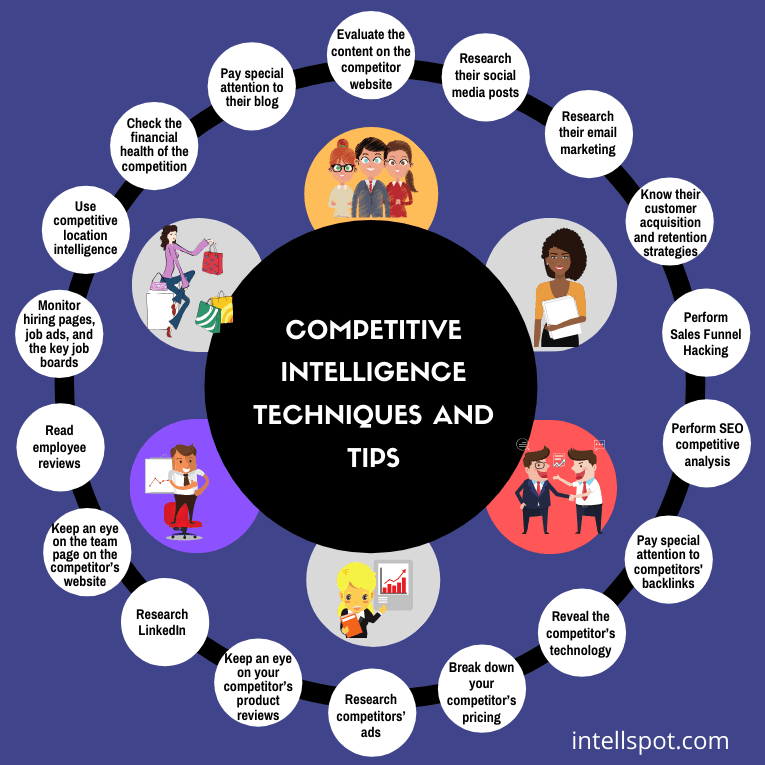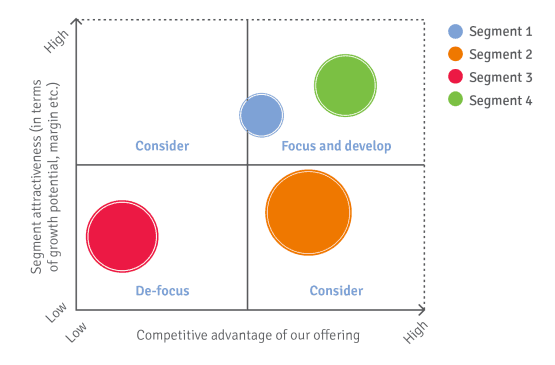When it comes to sales, there are a lot of different strategies out there. But if you’re looking for something that will really help you improve your account targeting strategy, then this blog post is for you.I’m going to share with you how to implement an ABM strategy and see results in no time!
Account Targeting Strategy
An account targeting strategy is a plan for how a business will target specific accounts with their marketing and sales efforts.
The strategy should include detailed information on the ideal customer for the business, the criteria for selecting accounts, and the messaging and approach that will be used with each account.
Businesses use account targeting strategies to focus their resources on the accounts that are most likely to result in sales and to improve their chances of success with each account.
What is a Target Account?
Target accounts are typically companies that you’d like to do business with.
Account based Marketing (or ABM) is a strategy that focuses on targeting specific, high-value customers.
A target account is an organization that your sales and marketing teams have identified as a good fit for your products or services. These accounts require focused outreach in order to turn them into lifelong customers and advocates for your business.
The Target Account Selling Methodology
TAS is a method of creating a highly-targeted and customized contact list of customers that receive ongoing support. This maximizes efficiency with resources and allows for the creation of highly qualified, high value clients.
The goal is to make the most out of the time and resources being spent on your most valuable customers.
Target Account Selling requires strong cooperation between the sales, marketing and customer success teams. The three teams work through a basic three-step approach:
1. Marketing identifies and qualifies potential opportunities. 2. Sales reaches out to those qualified opportunities and closes the deal. 3. Customer Success helps customers get maximum value from your product.
1. The marketing team and sales reps get together and determine the characteristics of their ideal customer.
The sales team only targets businesses that fit the Ideal Customer Profile.
As opposed to inbound, which focuses more on quantity, targeted sales is all about quality. It ensures that all potential targets are researched extensively and that there’s a clear fit for your product.
The quality is more important than the quantity of your lead list.
2. The sales department starts by thoroughly investigating each qualified prospect. This allows them to gain a thorough understanding of the customer and their business. The research team’s investigation is crucial in identifying any potential opportunities or needs that may exist.
This allows them to understand each decision maker in each targeted account and tailor their messaging accordingly.
The Target Account Sales Methodologies allows reps to create customized content for each of their buyers. This enables them to address each prospect’s unique needs and concerns, and to nurture them through the sales process.
3. The sales and marketing team work together to nurture each prospect through the sales process until they’re ready to purchase.
Both marketing and sales need to work closely with the customer success and support teams. The support team members can provide valuable insight into the customers’ experience, which can be used to improve the targeting of key accounts.
Target Account Selling Strategy
Account-based sales is a strategy where salespeople target large accounts with multiple decision makers.
Account based sales is a strategy that works well for subscriptions, those with tier-pricing, or those with ample opportunity for up-selling and cross-selling. It also works for large-ticket items.
The TAS approach is time consuming, but it’s worth it if you’re targeting the right accounts and researching them thoroughly.
As you learn more about your target accounts and ideal customers, it will become easier and quicker to build lists of them. Focus on researching these targets and compiling them into lists.
Your Ideal Customer Profile
Your ideal customer profile will be based on your research into the most successful customers you have.
By noticing common themes in your prospects, you can better identify their demographic.
Your ideal customer is someone who is looking for information that is valuable to them. They want to know what you have to offer and how it can help them.
As you move through each sales cycle, be sure to continue to tailor your content to each individual prospect. This will ensure you’re providing them with valuable and relevant information.
Knowing the general value of your product can help you determine what kind of customer you’re dealing with.
An Ideal Customer Profile (ICP) is a detailed description of your ideal customers. It includes information such as:
An ideal customer profile includes basic information such as industry, number of employees, annual revenue, budget, size of client base, and age of business.
Your marketing department can help you understand which types of buyers are most receptive to your marketing. By knowing who your audience is, you can better target your marketing efforts.
Your ICP should be broad enough that it encompasses all potential buyers, but narrow enough to be specific to your ideal buyer.
Account Intelligence
Once your sales and marketing teams agree on the Ideal Customer Profile, it’s time to target specific companies.
Next, you’ll want to generate a list of companies that you believe would benefit from your offering. Then, you can dig into the details for each company.
If you want to find out more about your top clients, try looking at their LinkedIn profiles. You’ll be able to see who the decision makers are, what the company structure is like, and any current news. This can help you better understand each account and tailor your content to their needs.
There are a variety of software systems available to help you collect valuable data on your prospect accounts. This can help you better understand your targets, and what their specific needs are.
Look for any clues that indicate they may be interested in your product or service. For example, if they mention pain points or frustrations, that’s a good sign.
The more data you have, the more effective your marketing strategies will be. As you continue your research, keep this in mind!
Competitor Intelligence
Your TAS team should be familiar with your USP and the customer’s pain points, but should also have a good grasp on your competition.
By studying your competitors’ social media activity, you can gain valuable insight into their strengths and weaknesses. This can help you identify ways to capitalize on their shortcomings and position yourself better in the market.
There are plenty of public data sources available, along with software to help speed up the process.
These sales tips aren’t meant to be used directly during a conversation with a potential customer, but they will help you build an effective sales pitch, prepare for common customer questions, and overcome any obstacles.
Market Intelligence
Some salespeople confuse market research with competitive research, but it’s important to understand the difference.
Once you’ve got your list of competitors, you’ll want to take a broader look at your market and industry.
Market research includes information about your competitors, but should also include overall economic trends and any industry changes that may affect your buyers.
This analysis of your call data can help uncover which of your customers are primed for growth and which customers may be in danger of losing you.
Account Selection
This research focuses on creating a list of potential targets that sales can approach.
You want to get as much out of your account as possible, so you want to make sure you’re engaging your key clients.
When identifying which account to focus on, it’s important to consider how many resources you have available. If you target too many, you may spread yourself too thin. On the other hand, if you only focus on a few, you may not maximize your overall sales. The trick is to find a balance between these two extremes.
Consider the interest level of each potential client against a number of factors. How likely are they to buy from you?
What is the potential revenue of the account and how much time will it take to get there?
Companies have different ways of determining which account to assign to a rep. Some use their own scoring method, while others rely on the reps’ opinion.
When deciding which clients to assign to sales, it is important to consider the quality of the client rather than the quantity. The better the client, the more likely the rep will be successful in closing the deal.
How to Find Target Accounts for ABM
Like trying to find Waldo, if you don’t know who your target accounts are, it will be hard to target them.
Before you reach out to any prospect, you need to first identify who it is you’re looking to get in contact with. The best way to do this is by creating an “Ideal Client” profile, or “ICP”.
An Ideal Customer Profile is a description of a company — not an individual — that perfectly fits your offering.
The Define Your Ideal Account-Based Marketing Target Accounts worksheet will help you better define your target account list. This will help you focus your ABM efforts and increase your chance of success.
After you’ve figured out who your target is, you can start searching for them. With modern technology, and some old-fashioned sleuthing, you can put together a list of potential sales opportunities. Here are 5 ways to Identify Target Accounts for ABM:
1. Use your existing technology.
Use the account discovery tool in the Terminus cloud to find target accounts for your B2B marketing. You can also utilize our predictive analytics to see which of your target companies are in market, and when they’ll be ready to buy.
2. Use your existing database.
Your CRM system and your automation software have tons of untapped data. Use that data to discover new opportunities, find new contacts, and uncover existing customers that has the highest potential for sales.
3. Take a look at your competitor’s customer base.
You can perform this research manually or use tools to automate the process.
4. …and your competitors’ customers.
Then, you can take a look at your top customers’ competitor lists and target these accounts for outreach. Owler is a platform that gives you insight into any account, including its key rivals. By looking at your most successful clients’ profiles, you can identify their competition. Then, you can get in touch with these rival companies to convince them that your product is a better fit for them.
Then, you can highlight the benefits of your solution to these competing companies.
5. Set up a job search alert.
If you sell to emerging markets, then make sure to sign up for job alerts that are specific to your buyer’s industry. That way, you’ll be one of the first to know whenever a company in your space is looking to fill a position.
Conclusion
When it comes to sales, there are a lot of different strategies out there. But if you’re looking for something that will really help you improve your account targeting strategy, then this blog post is for you. With these tips, you can successfully implement an ABM strategy and see results in no time!
Need Help Automating Your Sales Prospecting Process?
LeadFuze gives you all the data you need to find ideal leads, including full contact information.
Go through a variety of filters to zero in on the leads you want to reach. This is crazy specific, but you could find all the people that match the following:
- A company in the Financial Services or Banking industry
- Who have more than 10 employees
- That spend money on Adwords
- Who use Hubspot
- Who currently have job openings for marketing help
- With the role of HR Manager
- That has only been in this role for less than 1 year
Want to help contribute to future articles? Have data-backed and tactical advice to share? I’d love to hear from you!
We have over 60,000 monthly readers that would love to see it! Contact us and let's discuss your ideas!



